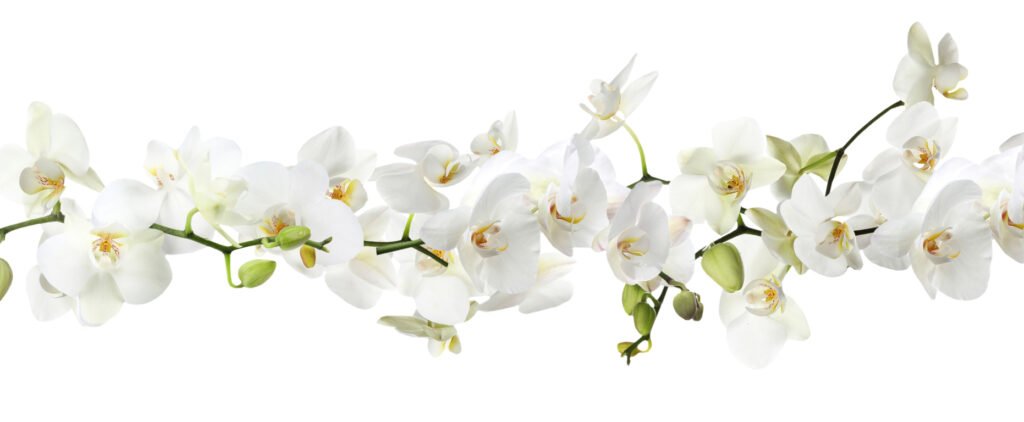Have you ever been out for a leisurely stroll, simply taking in the beauty of your surroundings, when all of a sudden, a delicate flower catches your attention? You can’t help but be drawn to its colors and shapes. It’s happened to me more times than I can count! One day, I found myself in this exact situation. I couldn’t resist inquiring about the name of that flower, and to my surprise, I discovered that its name actually started with the letter V. Wait a minute – do we really have flowers that start with V? I was amazed!
That moment sparked a curiosity within me that I couldn’t ignore. I realized that there’s a whole world of flowers that start with the letter V, waiting to be explored. Further research disclosed vibrant Violets, charming Verbena, and so many more.
Now, you might be wondering, why does this matter? Well, here’s the thing: learning about these flowers isn’t just about acquiring some trivia knowledge. It’s about connecting with the world in a new way. It’s about being able to identify and appreciate the beauty that’s often overlooked. It’s about having a little secret with nature – one that blooms right in front of you.
So, if you want to increase your knowledge about rare flowers that begin with V, keep reading.
27 Flowers That Start With V
1. Violet – Delicate Beauty and Thoughtful Sentiments

Violet flowers are cherished for their delicate appearance and charming fragrance. These perennial plants belong to the Violaceae family and are recognized for their heart-shaped leaves and small, colorful flowers that come in shades of purple, blue, white, and even yellow. Violets hold symbolism in various cultures, often representing modesty, faithfulness, and affection.
These versatile blooms are used in various ways, from garden borders to culinary applications. Their vibrant colors and subtle scent make them a favorite for perfumes and scented products. Additionally, violets have been used in traditional medicine for their potential health benefits. Their presence in gardens brings a touch of nostalgia and sentiment, evoking a sense of bygone eras and timeless charm.
2.Verbena – Vibrant Splashes of Color
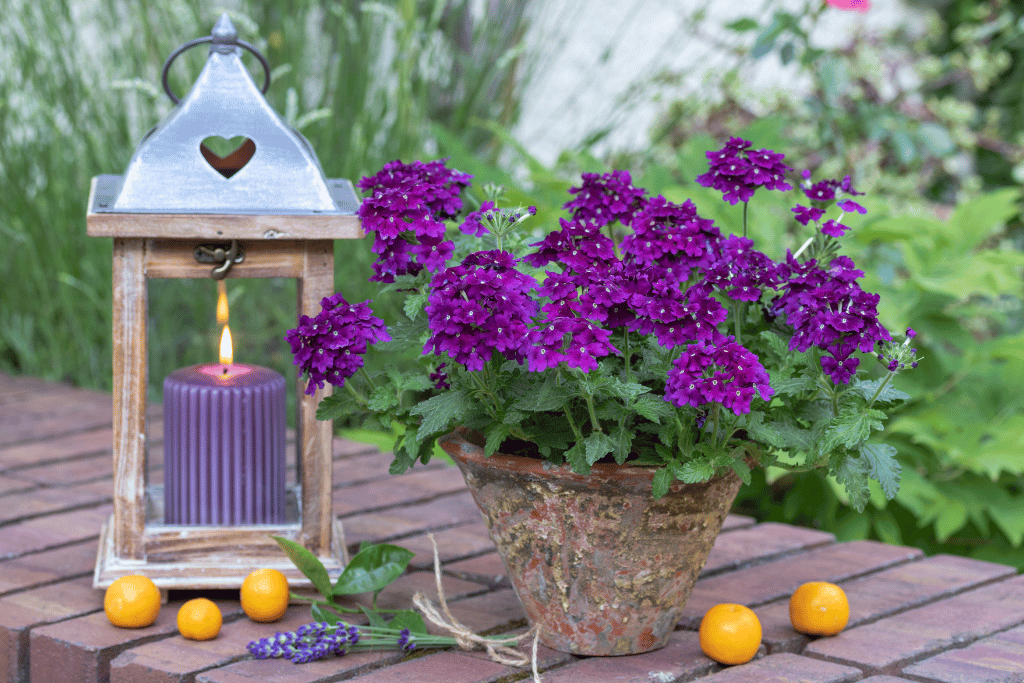
Verbena flowers are known for their vibrant and abundant blossoms that grace gardens and landscapes. Belonging to the Verbenaceae family, these perennials showcase clusters of small, tubular flowers in hues of pink, purple, red, and white. They are associated with healing properties in traditional herbal medicine and are believed to have soothing effects. Whether cascading from hanging baskets or adorning flower beds, verbena brings vitality and vitality to outdoor spaces.
Verbena blooms attract a variety of pollinators, including butterflies and bees, making them a valuable addition to wildlife-friendly gardens. Verbena’s resilience and adaptability make them suitable for various growing conditions, from containers to borders. They often bloom from spring to fall, providing a long-lasting display of color.
3. Vinca – Enduring Elegance in the Garden
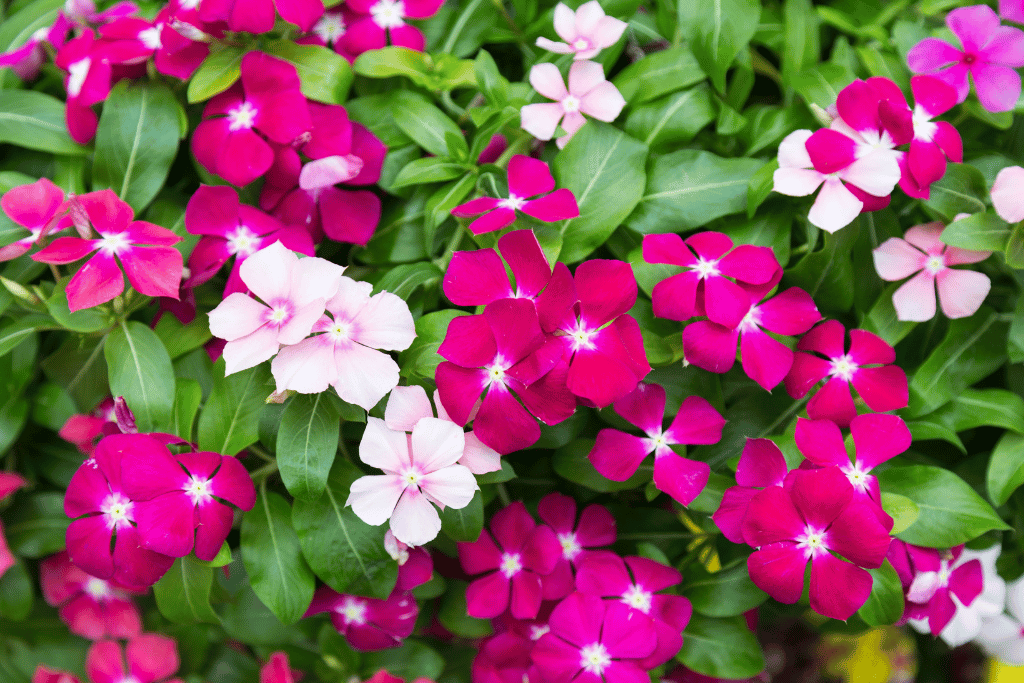
Vinca, also known as Periwinkle, are enduring flowers that begin with V and are admired for their tenacity and charm. Scientifically known as Catharanthus roseus, these flowers belong to the Apocynaceae family and feature glossy, evergreen leaves and funnel-shaped blooms. Vinca flowers come in shades of white, pink, and purple, often showcasing a contrasting eye at their centers.
Despite their delicate appearance, Vinca flowers are known for their ability to thrive in various conditions, making them a symbol of perseverance and strength. These low-maintenance plants are popular choices for ground covers, borders, and container gardens. Vinca’s use in traditional medicine has sparked interest due to compounds with potential medicinal benefits, though caution is advised due to potential toxicity.
4. Valerian – Tranquility in Fragrant Blooms
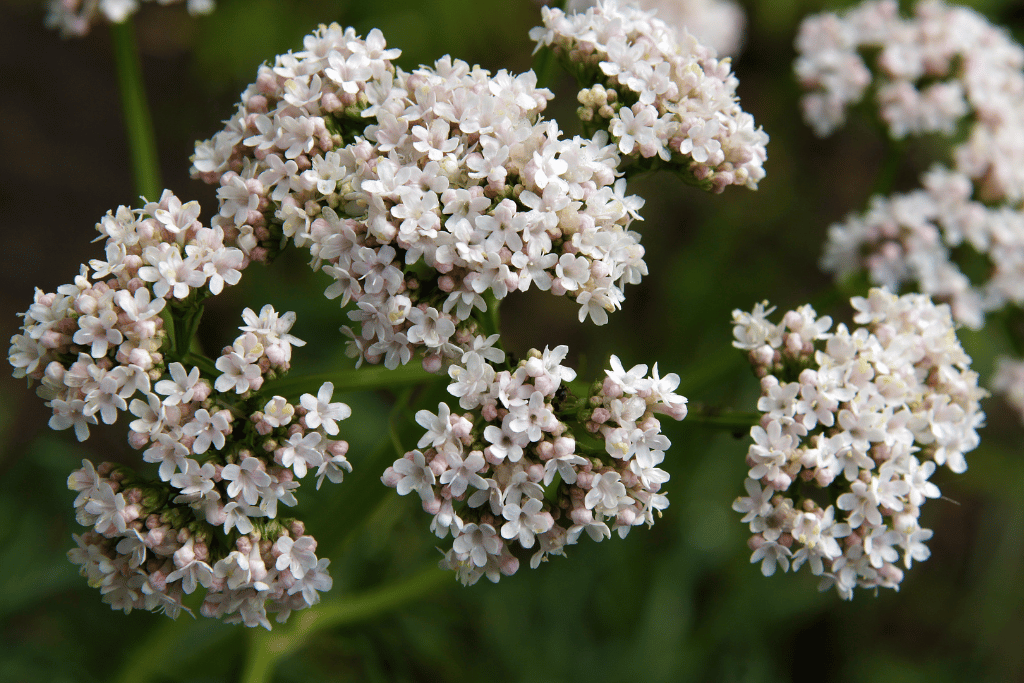
Valerian, captivating flowers that start with letter V, are celebrated for their fragrant blossoms and historical uses in herbal medicine. Valerian’s sweet scent attracts pollinators like bees and butterflies while adding an air of tranquility to gardens. The plant’s roots have been used traditionally for their potential calming and relaxation-inducing properties.
Scientifically known as Valeriana officinalis, belongs to the Caprifoliaceae family and features clusters of small, fragrant flowers in shades of white, pink, and lavender. The plant’s long history as a herbal remedy for sleep-related issues and anxiety contributes to its symbolic representation of calmness and serenity. Valerian’s ornamental and aromatic qualities make it a welcome addition to both garden beds and herbal gardens, inviting moments of repose and reflection.
5. Vanda Orchid – Exotic Splendor in Airy Blooms

Vanda Orchids are revered for their unique ability to grow without soil, attaching to trees and absorbing nutrients and moisture from the air. These enchanting flowers are celebrated for their exotic elegance and intricate blooms. Belonging to the Orchidaceae family, these epiphytic orchids display large, showy flowers with intricate patterns in a wide array of colors, from vibrant purples and blues to soft pastels.
These striking orchids hold cultural significance in various regions and are often associated with luxury and refinement. Their breathtaking appearance makes them popular choices for special occasions and floral arrangements. While they require specific care due to their epiphytic nature, the allure of Vanda Orchids lies in their exotic charm and the awe they inspire through their breathtaking displays.”
6. Virginia Bluebell – Tranquil Beauty of Spring
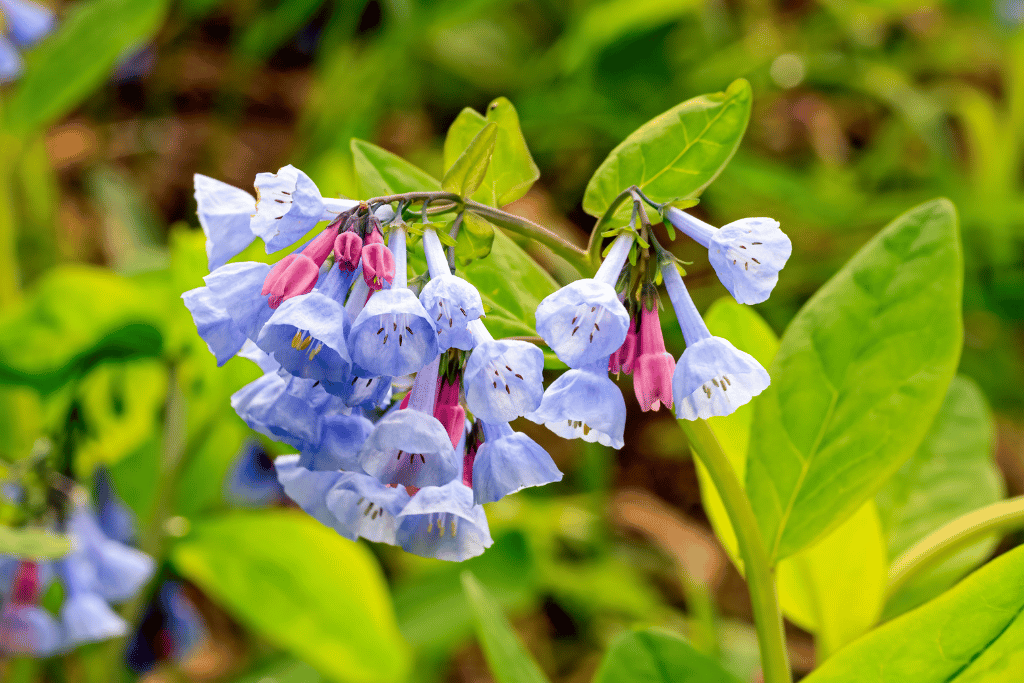
Virginia Bluebells symbolize renewal and rejuvenation, capturing the essence of the changing seasons. Their nectar-rich flowers attract pollinators like bees, making them valuable contributors to local ecosystems. Virginia Bluebells, captivating flowers that begin with V, herald the arrival of spring with their delicate and enchanting blooms.
Scientifically known as Mertensia virginica, these native wildflowers belong to the Boraginaceae family and showcase bell-shaped flowers that transition from pink buds to soft shades of blue or lavender as they mature. These ephemeral blooms are celebrated for their ability to carpet woodland areas in early spring, creating a serene and picturesque landscape.
7. Vervain – Mystical Charm and Medicinal History
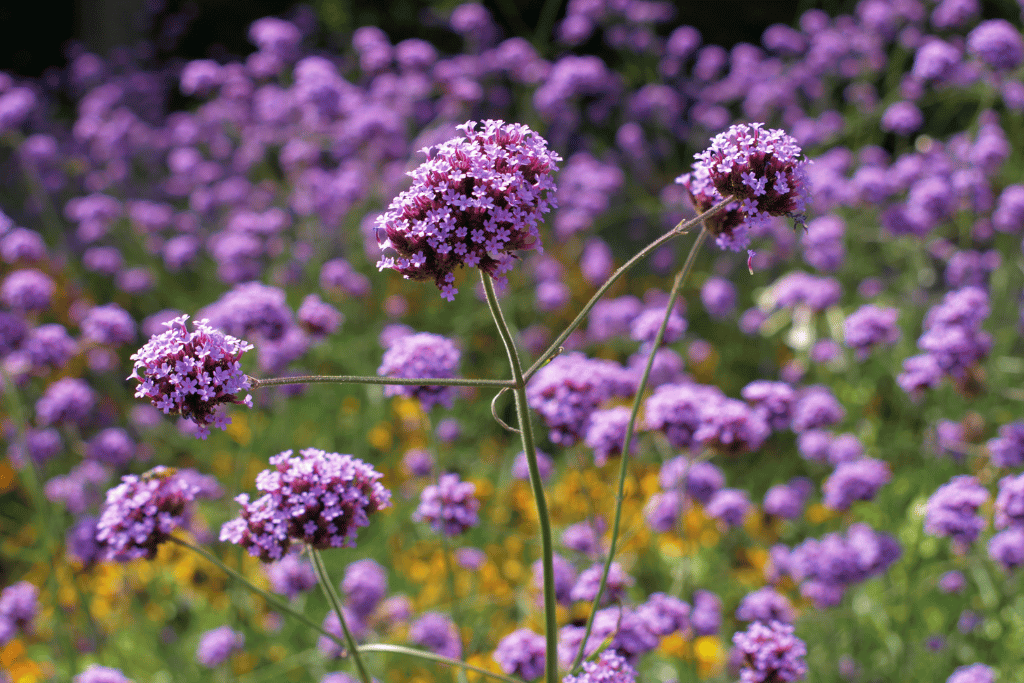
Vervain, mystical flowers that start with V, have a long history of medicinal and cultural significance. In Scientific language, known as Verbena officinalis, these perennial herbs belong to the Verbenaceae family and are recognized for their slender spikes of small, tubular flowers in purple, pink, or white shades.
Vervain has been used in traditional herbal medicine for its potential healing properties, often associated with relaxation and stress relief. In folklore, vervain is connected to protection, purification, and magical practices. Its fragrant blooms attract butterflies and other pollinators while adding a touch of enchantment to gardens and landscapes.
8. Violet Trumpet Vine – Bold Elegance in Clusters
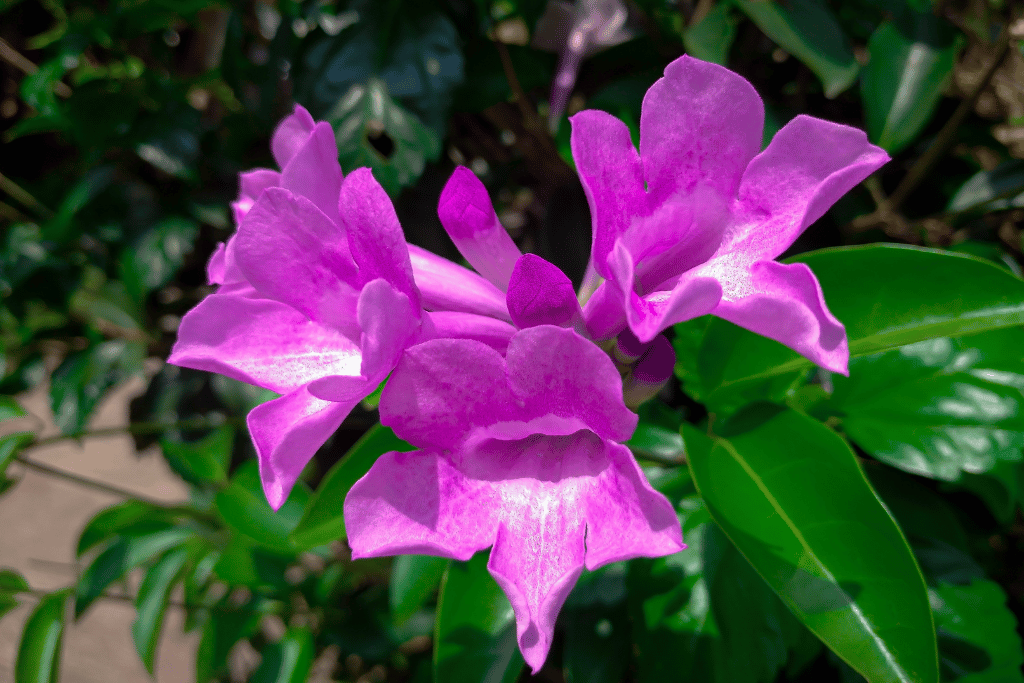
Violet Trumpet Vine’s striking appearance and vigorous growth make it a favorite choice for trellises, fences, and arbors. Its trumpet-shaped flowers are not only visually appealing but also attract hummingbirds, adding an element of lively energy to outdoor spaces. With proper care, this vine can create a dramatic focal point and contribute to a rich tapestry of colors and textures.
The botanical name of the Violet Trumpet Vine is Clytostoma callistegioides. Belonging to the Bignoniaceae family, these woody vines are renowned for their exquisite violet-blue flowers. Their captivating trumpet-shaped blooms, clustered together, infuse gardens with a striking and lively elegance.
9. Venus Flytrap – Nature’s Carnivorous Wonder
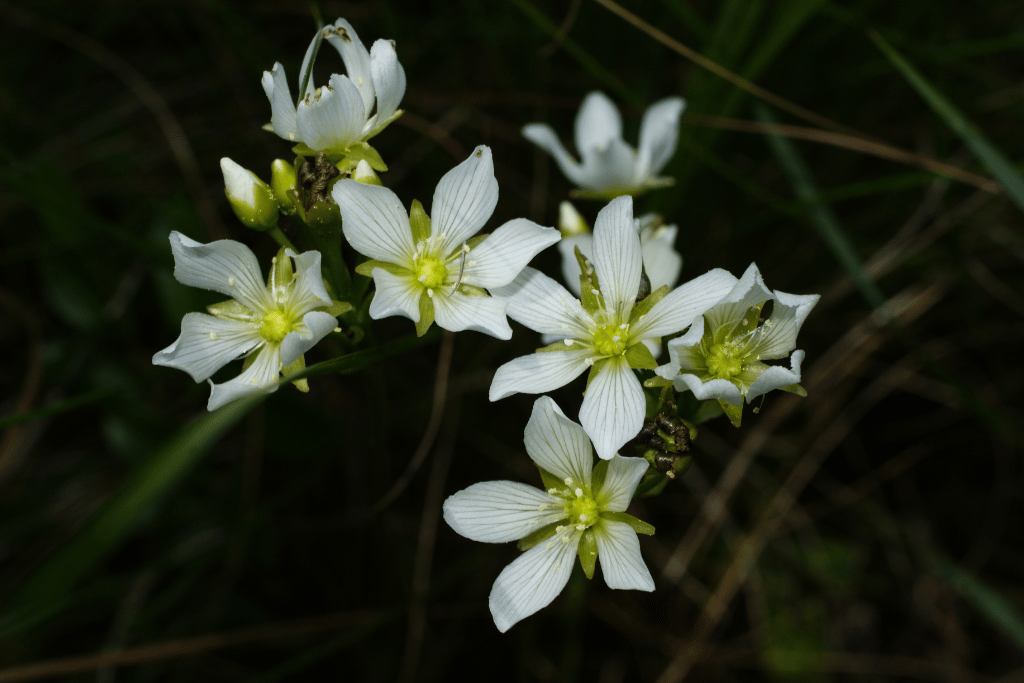
Venus Flytraps, captivating blossoms commencing with the letter V, have gained renown for their carnivorous tendencies and distinctive ability to allure and ensnare insects. With the scientific designation Dionaea muscipula, these perennial plants originate from North and South Carolina and are classified within the Droseraceae botanical family.
Venus Flytraps feature hinged leaves with trigger hairs that, when touched by an insect, cause the leaves to snap shut, trapping and digesting the prey. Their remarkable carnivorous nature makes them a symbol of adaptation and survival in challenging environments. Venus Flytraps thrive in acidic, bog-like conditions and are often cultivated by enthusiasts as fascinating and educational plants.
10. Veronica – Graceful Spikes of Color
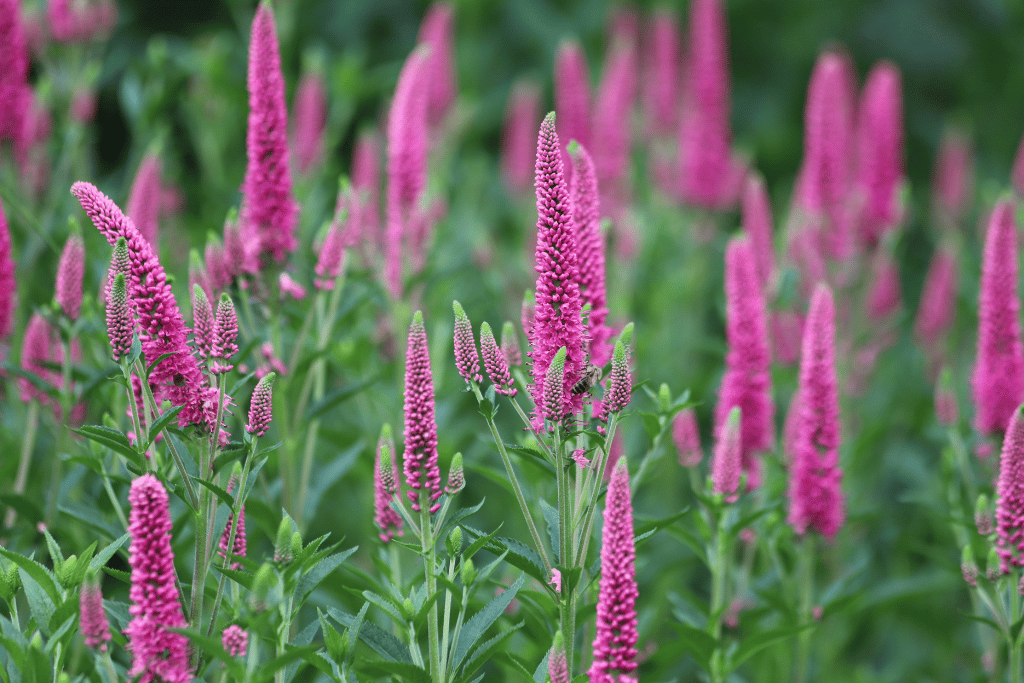
Belonging to the Plantaginaceae family, Veronica perennials are recognized for their slender spikes of small, tubular flowers that come in a range of colors, including blue, purple, pink, and white. These graceful flowers starting with V, bring color and charm to gardens with their clustered blooms.
Veronica’s tall, elegant flower spikes add vertical interest to garden borders and beds. They attract pollinators like bees and butterflies, contributing to the overall health of the ecosystem. Veronica flowers symbolize fidelity and loyalty, often associated with eternal love and devotion. Their versatility and ease of cultivation make them popular choices for a variety of garden styles, from formal arrangements to wildflower gardens.”
11. Velvet Flower – Royal Richness in Petals
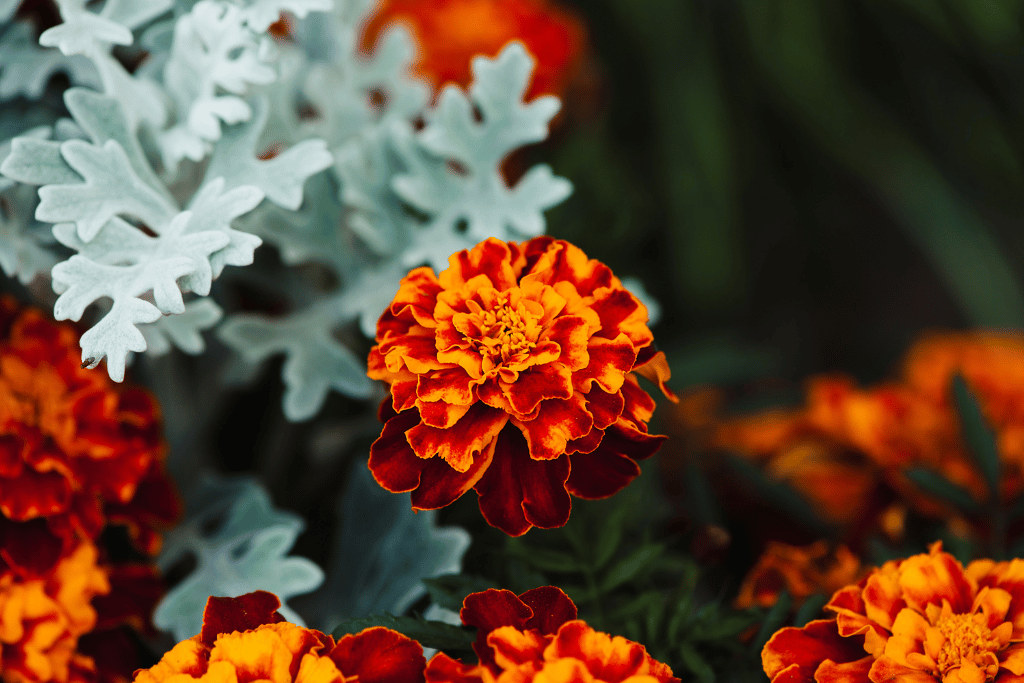
Velvet Flowers are a favorite among gardeners for their striking appearance and vibrant color. Their rich, warm tones evoke feelings of warmth and splendor, making them excellent choices for adding visual drama to flower beds and containers. Additionally, their distinct scent is known to repel certain pests, making them both beautiful and functional additions to outdoor spaces.
Velvet Flowers, opulent blooms that start with letter V, showcase a velvety texture that exudes an air of luxury. Scientifically known as Tagetes velutina, these annual flowers belong to the Asteraceae family and are recognized for their intricate, deep-orange petals with a soft, velvety touch.
12. Voodoo Lily – Mysterious Beauty in Unusual Blooms
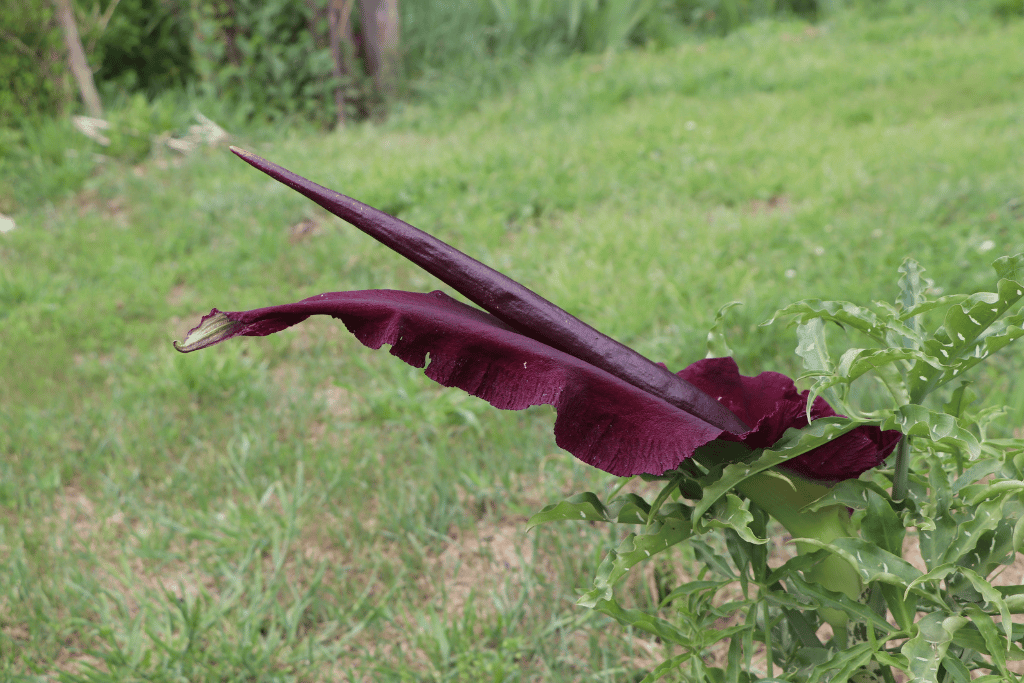
Voodoo Lilies hold a particular fascination due to their rarity and distinctive appearance. They are often cultivated by enthusiasts who appreciate the odd and extraordinary aspects of the natural world. Their enigmatic blooms symbolize the hidden beauty and unexpected wonders that can be found in even the most peculiar forms of life. Voodoo Lilies are known for their pungent aroma, resembling rotting meat’s scent. Despite their unusual attributes, this odor attracts pollinators like flies, contributing to their reproductive success.
Voodoo Lily, mysterious flowers starting with V, captivate with their unconventional and exotic appearance. These odd nature flowers, scientifically known as Dracunculus vulgaris, belong to the Araceae family and feature a large, burgundy spathe that encases a central spike, resembling a unique form of flora.
13. Virginia Spiderwort – Graceful Blooms of the Woodlands

Virginia Spiderwort’s blooms open in the morning and close by the afternoon, creating an ever-changing display of color throughout the day. Their adaptable nature makes them suitable for a variety of growing conditions. The plant’s common name refers to the long, thread-like stamen that protrudes from the flower’s center, resembling spider legs. These charming blooms attract pollinators like bees and butterflies, contributing to the vibrancy of natural landscapes.
Virginia Spiderwort grace woodlands and gardens with their delicate beauty. In Scientific language, they are called Tradescantia virginiana; these native perennials belong to the Commelinaceae family and are recognized for their three-petaled, star-like flowers that come in shades of blue, purple, and pink.
14. Viper’s Bugloss – Vibrant Nectar Source for Pollinators

Viper’s Bugloss, vivid blooms commencing with V, are renowned for their remarkable look and significance as a pollinator nectar provider. They are part of the Boraginaceae family and showcase towering spikes of tube-shaped blossoms in blue, purple, or pink hues. Under the scientific name Echium vulgare, these plants are biennial or perennial in nature.
Viper’s Bugloss is valued for its vibrant color and ability to thrive in challenging conditions, making it a favorite among wildflower enthusiasts and wildlife gardeners. The plant’s common name refers to the belief that its coiled flower spikes resemble a snake’s head. Viper’s Bugloss blooms attract a variety of pollinators, especially bees, making them important contributors to the health of ecosystems.
15. Veltheimia – Unique Elegance in Indoor Spaces
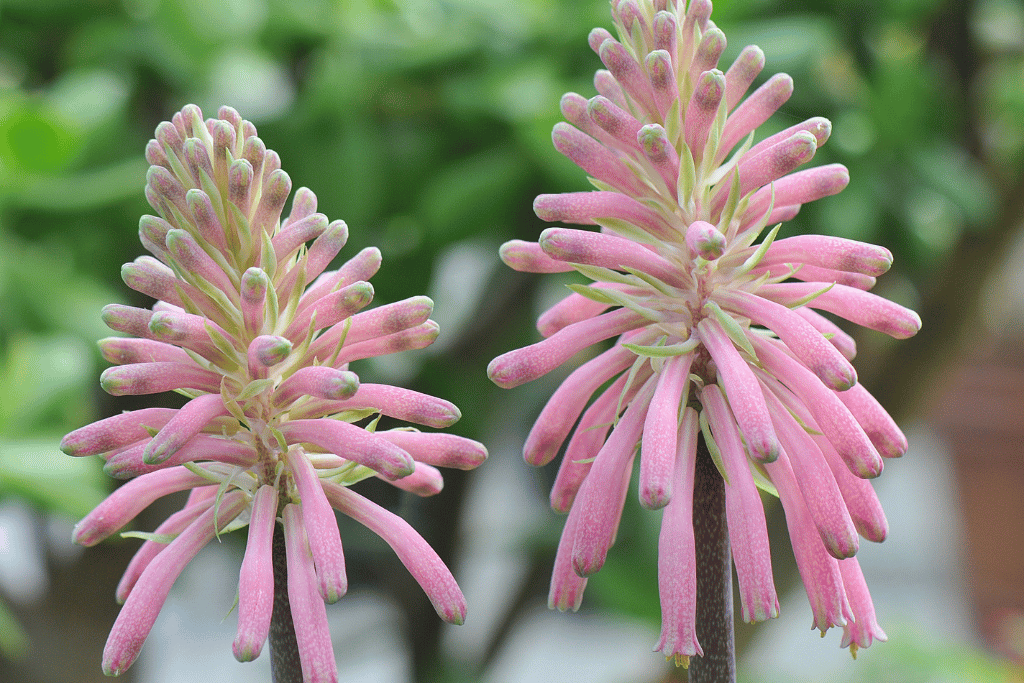
Veltheimia displays elegant tall spikes adorned with pendant tubular flowers in hues ranging from pink and coral to white. Belonging to the Hyacinthaceae family, these flowering bulbs are known as Veltheimia bracteata by their scientific name.
Veltheimia’s intriguing flower clusters make them popular choices for potted plants, particularly in indoor settings. Their unusual appearance adds a touch of exotic beauty to living spaces, and they often bloom during the winter months when other flowers may be scarce. With proper care and attention, Veltheimia can brighten up interiors and provide a unique focal point that invites admiration and conversation.
16. Victoria Water Lily – Majestic Blooms on Water’s Surface
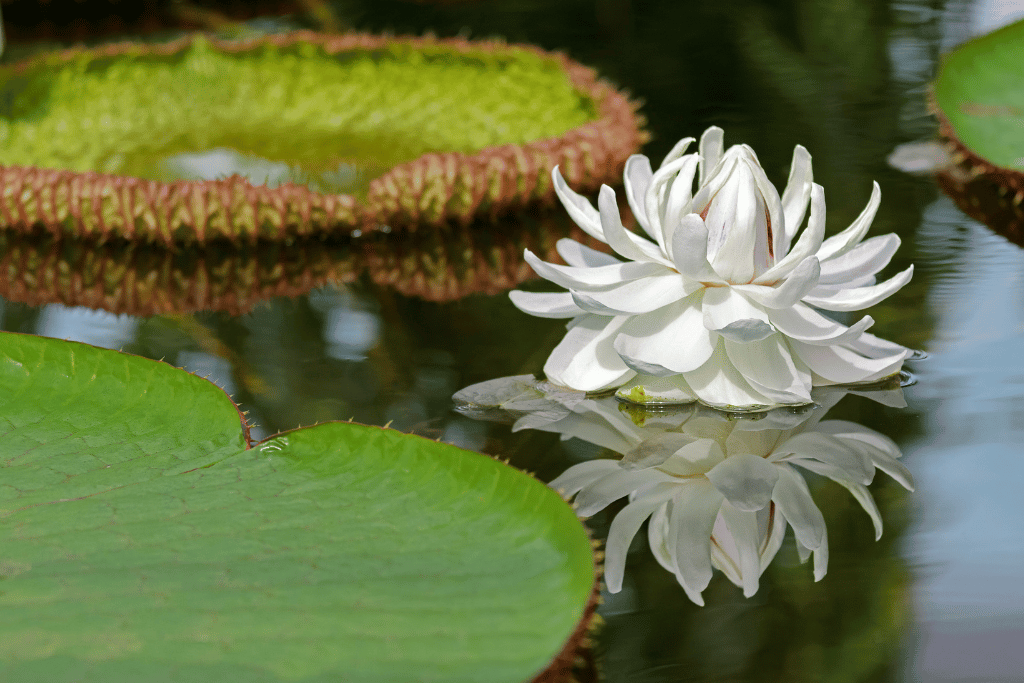
Victoria Water Lilies are native to the Amazon River basin and are celebrated for their ability to support the weight of a small child on their sturdy leaves. Their flowers open in the evening and emit a sweet fragrance, attracting beetles as pollinators. The leaves’ distinctive structure and the lily’s captivating blooms make it a symbol of nature’s grandeur and the beauty that can be found in watery landscapes.”
These majestic flowers command attention with their immense size and regal presence on the water’s surface. Scientifically known as Victoria amazonica, these aquatic plants belong to the Nymphaeaceae family and are recognized for their massive, circular leaves that can reach up to 10 feet in diameter.
17. Vriesea – Tropical Splendor in Exotic Blooms
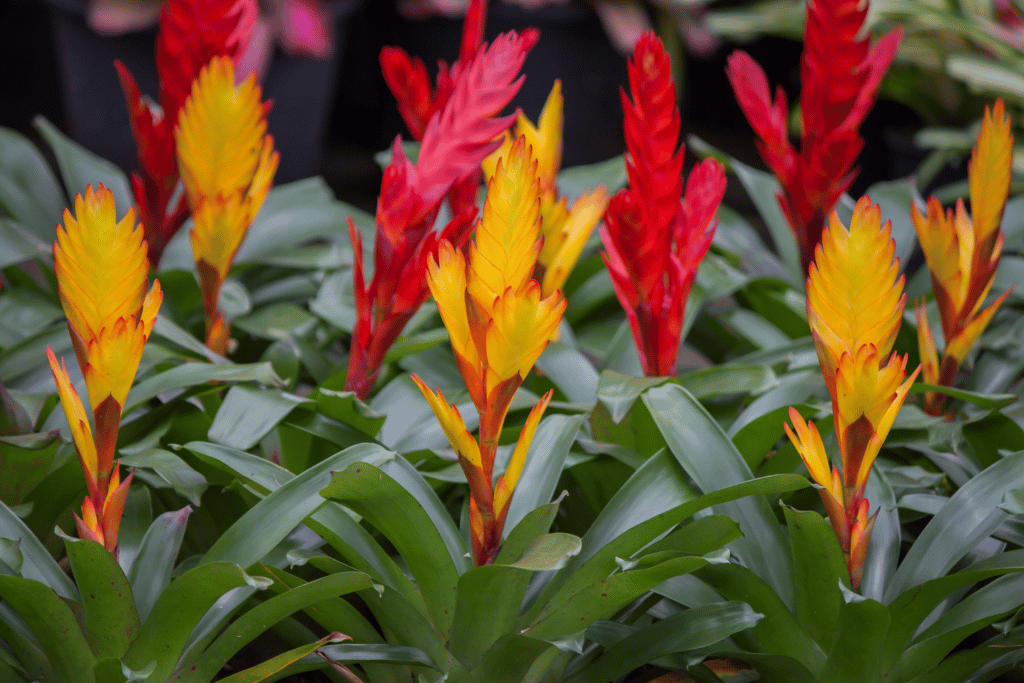
Vriesea’s unique appearance and wide range of colors, including shades of red, orange, and yellow, make them sought-after choices for indoor and outdoor gardens. These captivating flowers, bring a touch of the tropics with their exotic and vibrant blooms. Belonging to the Bromeliaceae family, these epiphytic plants showcase rosettes of leaves and tall flower spikes with colorful bracts.
These plants are known for their resilience and adaptability, thriving in various conditions. These plants are known for their resilience and adaptability, thriving in a variety of conditions. With their architectural beauty and tropical flair, Vriesea adds an instant dose of color and personality to spaces.
18. Vernal Witch Hazel – Early Blooms of Winter’s End
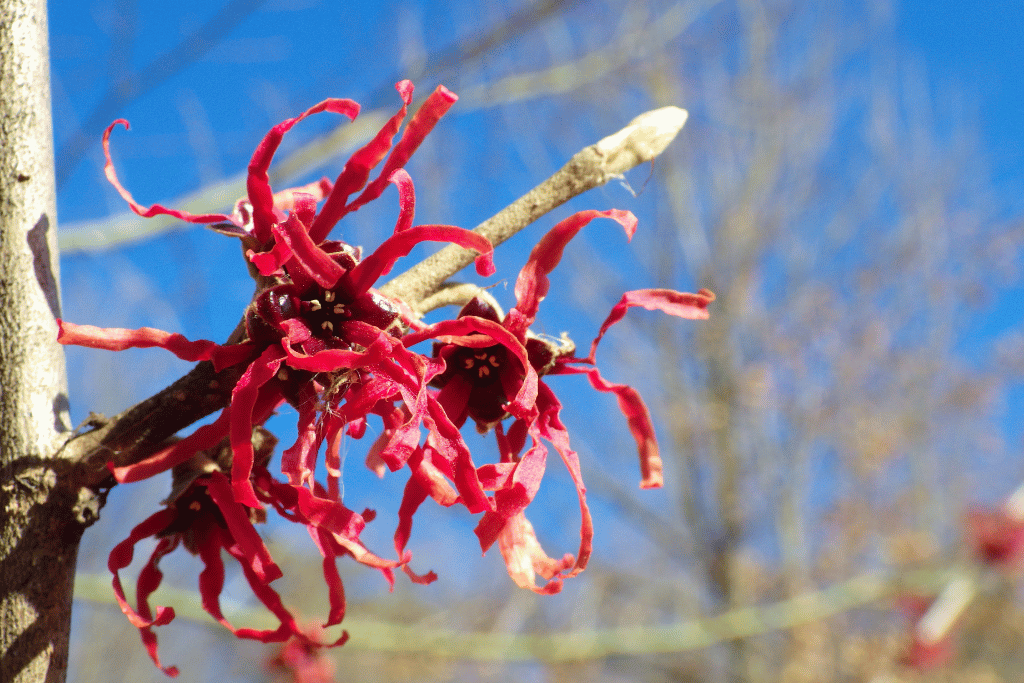
Vernal Witch Hazel, captivating flowers that begin with the letter V, offer a burst of color during late winter and early spring when few other plants bloom. Its Scientific name is Hamamelis vernalis. These deciduous shrubs belong to the Hamamelidaceae family and showcase fragrant, spidery flowers in shades of yellow, orange, or red.
Vernal Witch Hazel’s ability to flower in colder months adds a welcome contrast to winter landscapes. The scent of their blooms and their delicate appearance create a sense of anticipation for the coming spring. These shrubs are valued for their cold-hardiness and their contribution to seasonal transition in gardens.
19. Valerianella – Delicate Wildflowers of Open Spaces
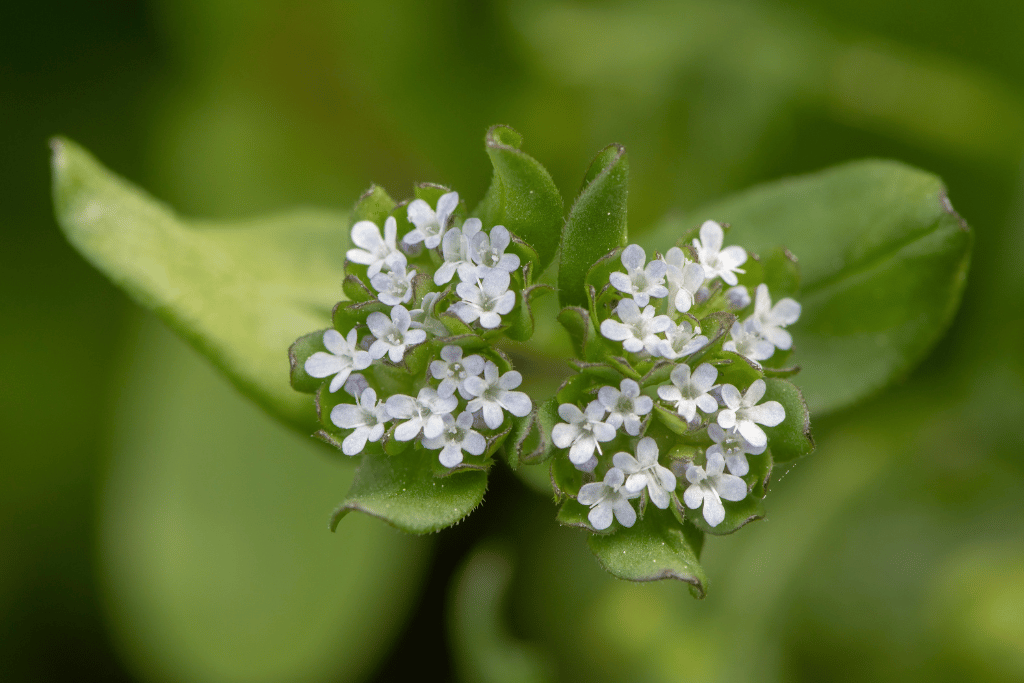
Valerianella’s tiny flowers and grass-like foliage create a charming carpet of green and white in wild landscapes. They are often used as cover crops and forage for wildlife. Additionally, their tender leaves are edible and have a mild, nutty flavor, making them a popular choice for salads and culinary dishes.
Valerianella grace open fields and meadows with their simple beauty. Commonly known as Cornsalad or Lamb’s Lettuce, these annual or biennial plants belong to the Caprifoliaceae family and feature small, star-like flowers in shades of white or pale blue.
20. Vetch – Nurturing Nitrogen Fixers in Fields

Vetch’s presence serves as a reminder of the intricate relationships between plants and the environment. Vetches, found in shades of pink, purple, blue, or white, are members of the Fabaceae family. Scientifically classified as Vicia species, these plants can be either annual or perennial. They possess a captivating charm, adorning natural landscapes with their vibrant flowers and distinctive leguminous growth patterns.
Vetch’s ability to fix nitrogen in the soil makes it a valuable component of natural ecosystems and a favorite choice for cover cropping. These wildflowers are often found in meadows, grasslands, and along roadsides, adding splashes of color and contributing to soil health. Their climbing and trailing growth habit allows them to intertwine with other plants, creating a harmonious tapestry in open spaces.
21. Virgin’s Bower – A Delicate Drapery of Flowers
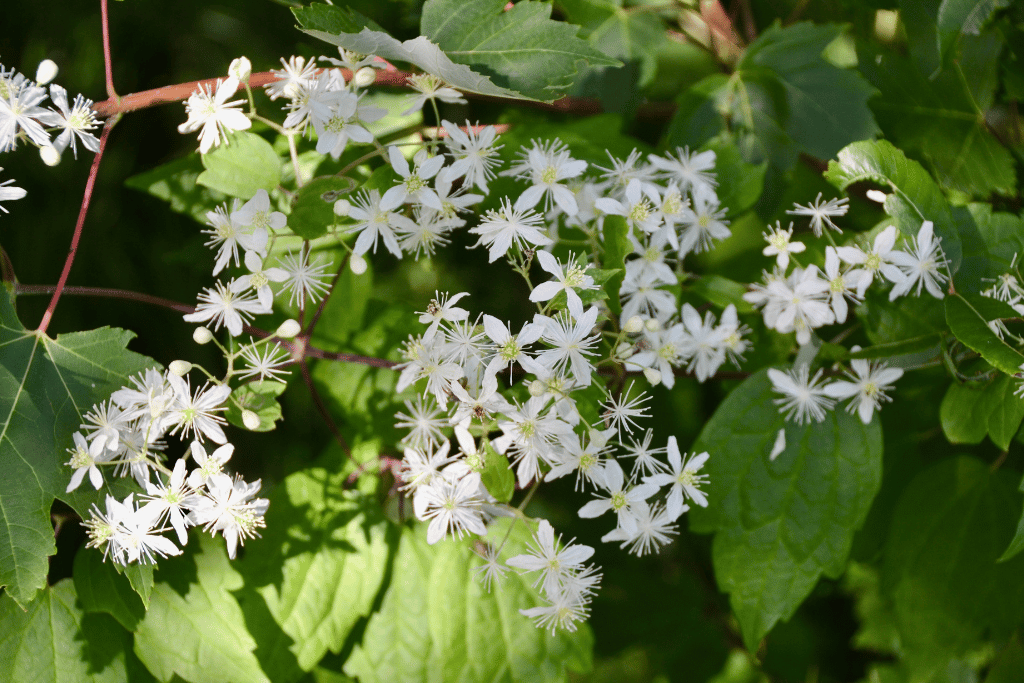
The name “Virgin’s Bower” derives from its association with the Virgin Mary in Christian symbolism. The plant’s graceful appearance and the way its vines drape and cascade contribute to its ethereal beauty. Whether adorning structures or natural habitats, Virgin’s Bower adds a sense of enchantment to outdoor spaces. Virgin’s Bower’s ability to climb and intertwine with other plants makes it a favorite choice for trellises, arbors, and fences. Its blooms, resembling scattered stars, add a touch of whimsy to garden settings.
Virgin’s Bower, is known for their delicate elegance and climbing nature. Scientifically known as Clematis species, these flowering vines belong to the Ranunculaceae family and showcase intricate, star-like flowers in shades of white, pink, or purple.
22. Vitex – Herbal Beauty and Symbolism

Vitex has a long history of use in herbal medicine, particularly for its potential hormonal balancing effects. Its common name, Chaste Tree, reflects its traditional use to support women’s health. The plant’s association with chastity and virtue in folklore adds to its symbolism.
Vitex’s ornamental value and potential benefits have made it a cherished addition to gardens and landscapes. Its graceful appearance and potential healing properties remind us of the interconnectedness of nature and human well-being. Vitex, known for their enchanting qualities, are renowned for both their herbal attributes and symbolic significance. Botanically labeled as Vitex agnus-castus, these shrubs or diminutive trees are part of the Lamiaceae botanical family and display clusters of aromatic, lavender-blue blooms.
23. Vanda Miss Joaquim – National Orchid of Singapore
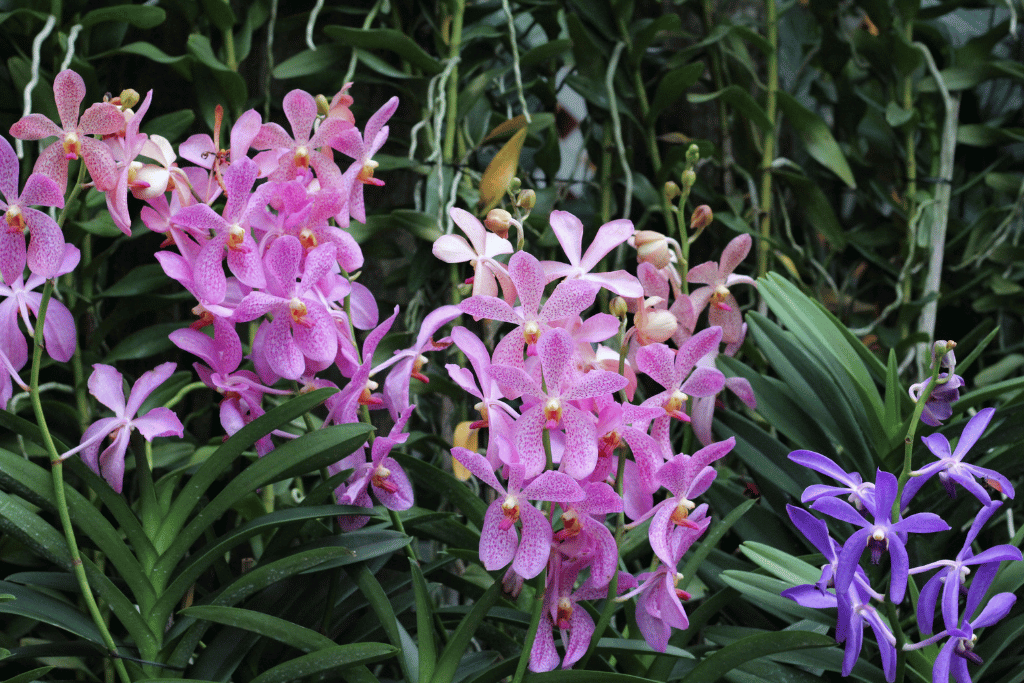
Vanda Miss Joaquim’s unique coloration and resilience to a wide range of growing conditions have made it a symbol of Singapore’s multicultural identity and the country’s horticultural achievements. The orchid’s distinctive appearance and adaptability reflect the nation’s vibrant diversity and its ability to thrive in various environments.
It holds the distinction of being the National Orchid of Singapore. Papilionanthe Miss Joaquim’s scientific name is Papilionanthe Miss Joaquim, these hybrid orchids showcase intricate flowers with a combination of pink, purple, and yellow hues.
24. Velvetleaf – Prolific Wildflower in Farmlands
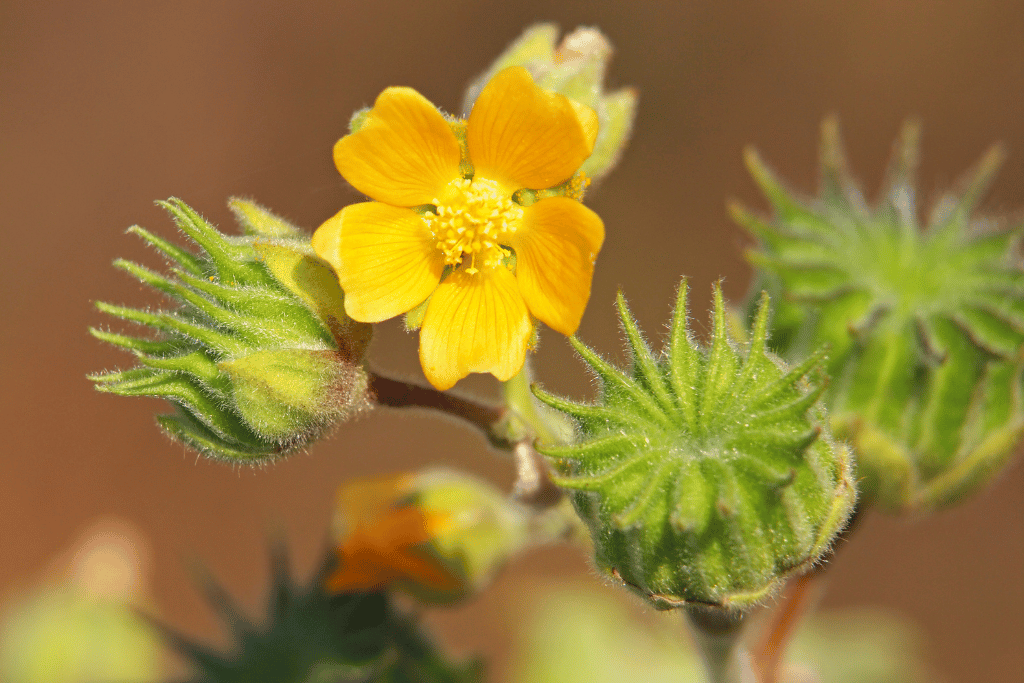
Velvetleaf, charming flowers that start with the letter V, are annual plants known for their heart-shaped leaves and distinctive, velvety texture. Botanically called as Abutilon theophrasti, these flowers belong to the Malvaceae family and showcase pale yellow flowers with maroon centers.
Velvetleaf’s rapid growth and ability to thrive in disturbed areas have made it a common sight in agricultural fields and other cultivated landscapes. Despite its status as a weed in many regions, its velvety leaves and modest blooms contribute to the visual tapestry of rural areas.
25. Velvetgrass – Soft Beauty in Wild Meadows
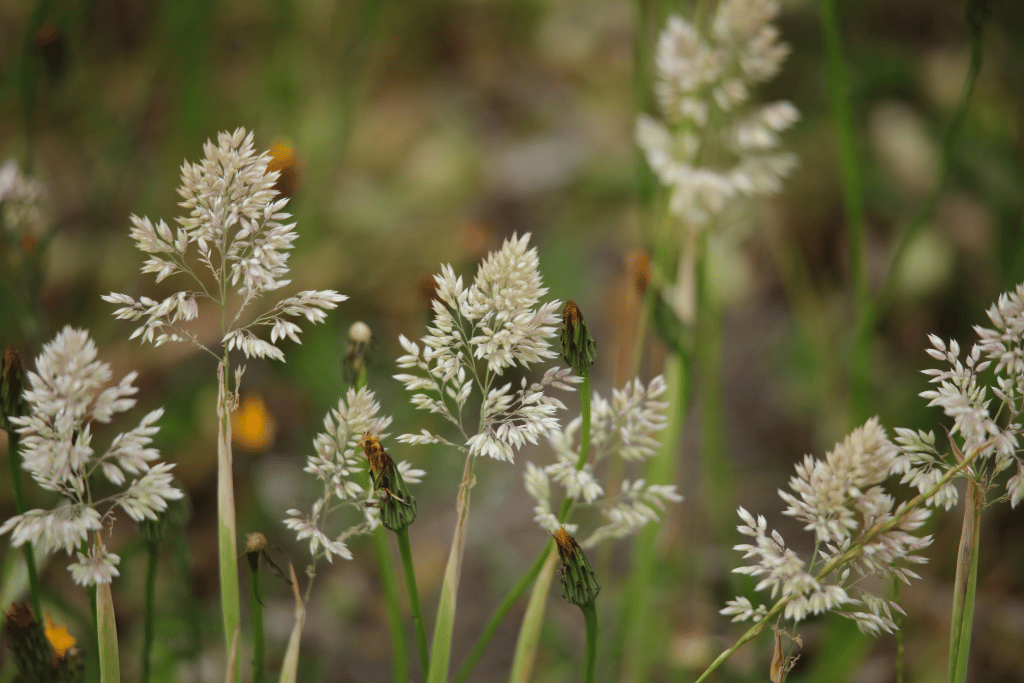
Velvetgrass, identified by its scientific name Holcus lanatus, is a member of the Poaceae family. These grasses are renowned for their velvety look attributed to delicate hairs on their leaves. They are charming grass-like specimens that commence with the letter “V” and form a gentle, luxurious carpet across untamed meadows and expansive clearings.
Velvetgrass’s ability to spread rapidly and create a dense ground cover makes it a valuable component of natural landscapes. While it is sometimes considered a weed in cultivated areas, its presence contributes to the biodiversity of meadows and pastures. The grass’s gentle sway in the breeze adds movement and texture to open spaces, inviting observers to connect with the beauty of nature.
26. Venus’ Looking Glass – Delicate Beauty in Wild Settings
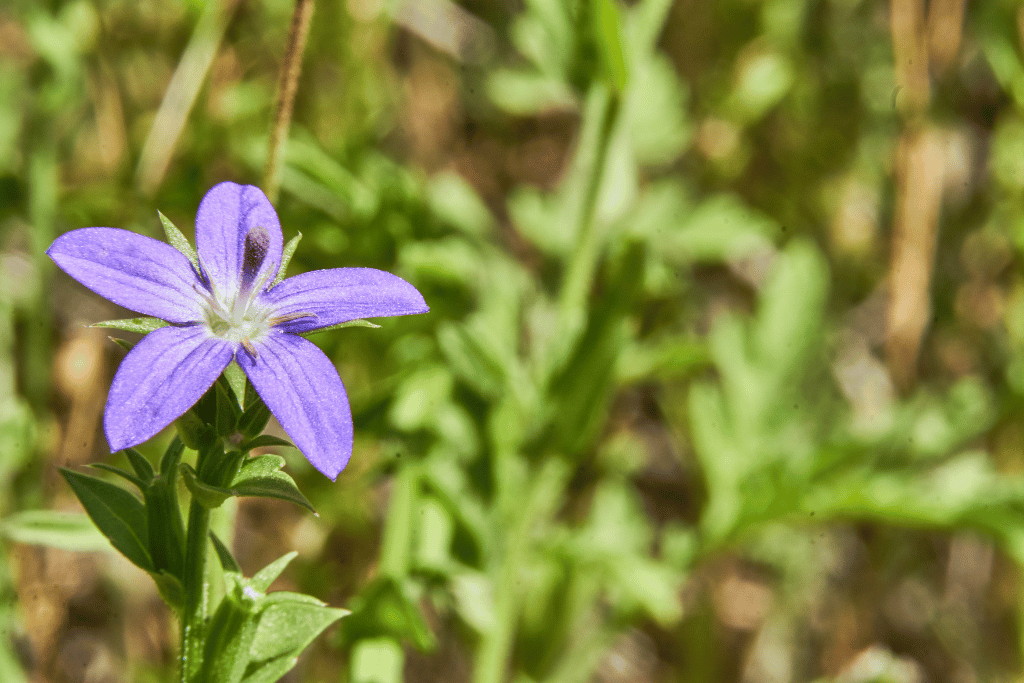
Venus’ Looking Glass, scientifically known as Triodanis perfoliata, graces grasslands and open spaces with its delicate blossoms. These annual or biennial plants belong to the Campanulaceae family and present enchanting, bell-shaped flowers that range in hues from gentle blues to deep violets.
The name “Venus’ Looking Glass” is derived from the petals’ translucent quality, resembling mirrors or glass. These untamed flowers commonly thrive along roadsides and within meadows, augmenting the visual tapestry of natural vistas. Their dainty blooms and understated elegance beckon onlookers to intimately explore the intricate nuances that the natural world so generously offers.
27. Vanilla Orchid – Source of Flavor and Fragrance

Renowned as one of the most ubiquitous flavor enhancers globally, vanilla holds a central role in both culinary and aromatic applications. As an integral element of a myriad of cultures and cuisines, the Vanilla Orchid, scientifically designated as Vanilla planifolia, stands out for its aromatic pods which yield the precious vanilla flavoring. These climbing orchids, belonging to the Orchidaceae family, boast delicate pale yellow or greenish flowers characterized by their distinctive structure.
The unique taste and captivating aroma of the Vanilla Orchid originate from its pods, commonly referred to as beans, which develop after the pollination process. This complex ritual of pollination, frequently choreographed by particular types of bees, adds to the plant’s aura of mystery.



